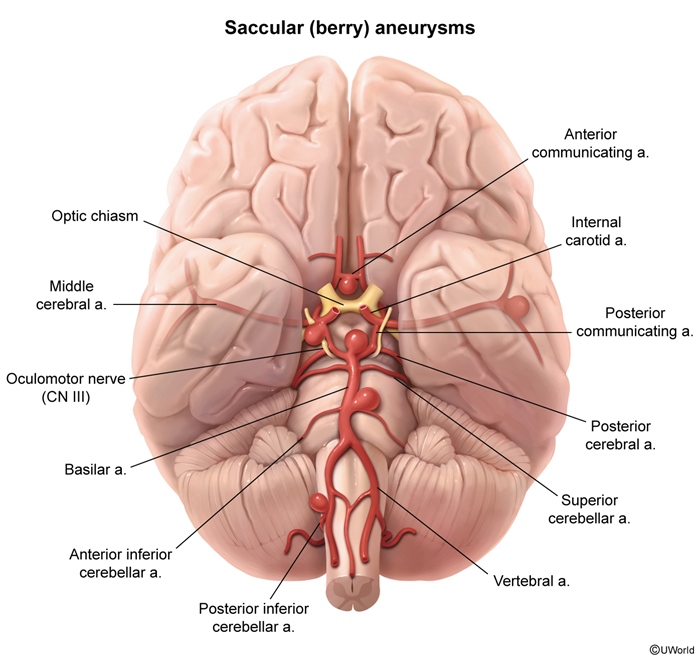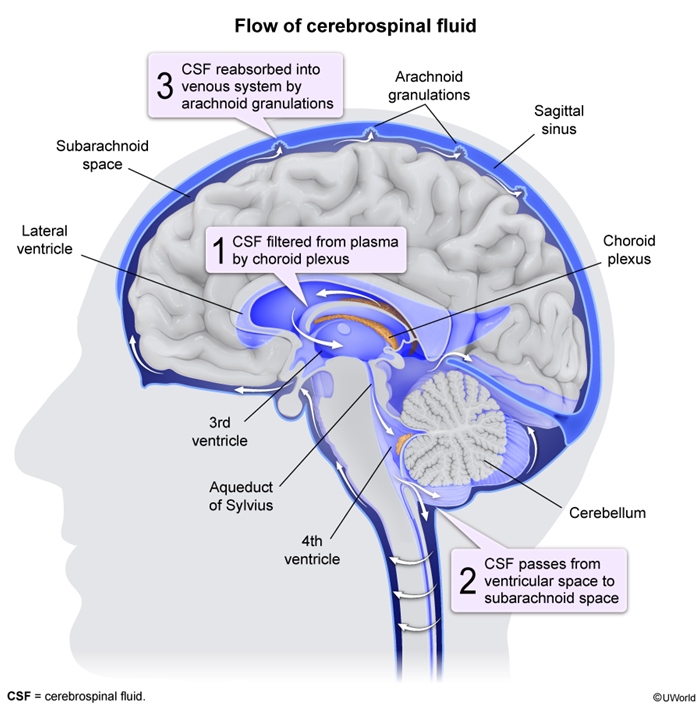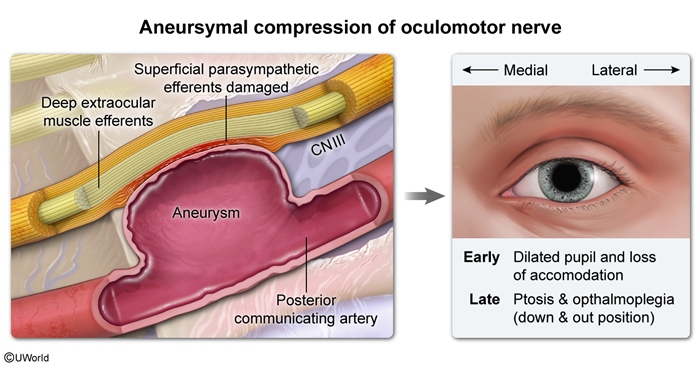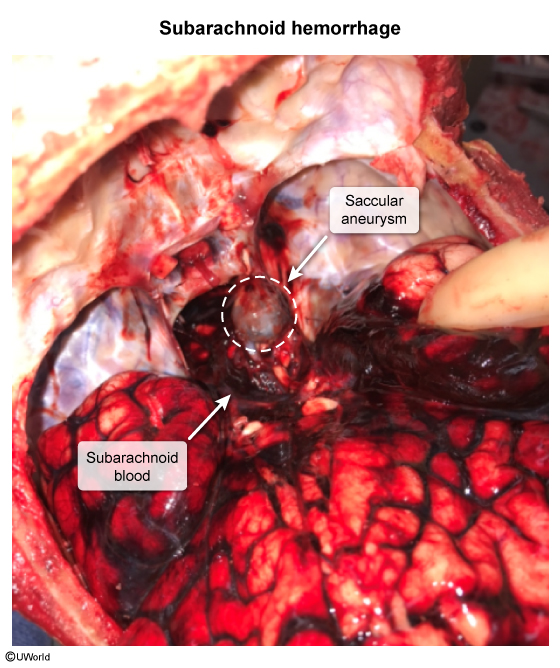Subarachnoid Hemorrhage
Article Sections
Introduction
Subarachnoid hemorrhage (SAH) describes bleeding from a damaged cerebral artery causing blood accumulation between the arachnoid and pia mater (subarachnoid space). Although trauma can cause SAH, this review focuses on the distinctive features of nontraumatic (ie, spontaneous) SAHs that typically result from the rupture of saccular (berry-like) aneurysms. SAHs are less common than other stroke types (eg, ischemia and intracerebral hemorrhage) but are among the deadliest neurovascular conditions, with considerable morbidity among survivors.
Etiology
SAHs most commonly (80%) result from ruptured saccular aneurysms. The remaining 20% are nonaneurysmal with a diverse range of mechanisms (eg, arteriovenous malformation, intracranial artery dissection).
Epidemiology
- Prevalence of saccular aneurysms in the general population is approximately 3%.
- Incidence of aneurysm rupture peaks at age 50, with most aneurysmal SAHs occurring between the ages of 40 and 60. However, they can occur at any age (eg, 5% occur before age 20).
Continue Learning with UWorld
Get the full Subarachnoid Hemorrhage article plus rich visuals, real-world cases, and in-depth insights from medical experts, all available through the UWorld Medical Library.
Figures





Images
